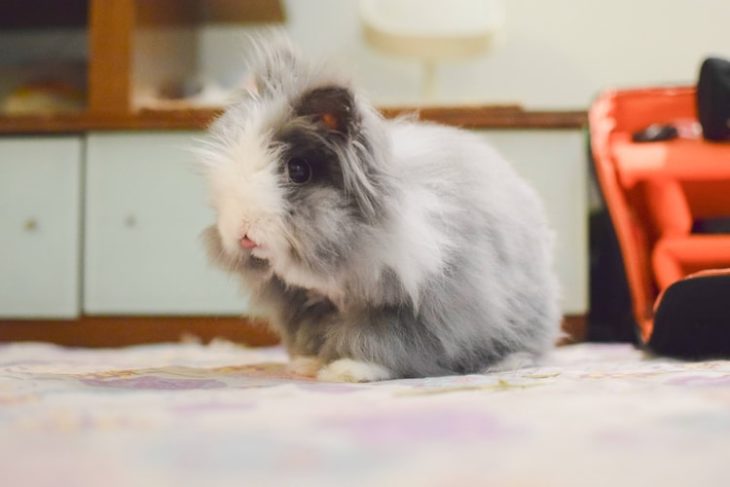
How to prevent rabbits and rodents from damaging your car
Content
Seemingly harmless and innocent at first glance, rabbits can cause significant damage to the wiring and lines in your car. Along with rats and other rodents, rabbits like to get into the engine compartment of a car because they are attracted to the peanut butter the manufacturer uses to thread wires through tubes. This is a big problem with stored vehicles, which can sit for a while without being checked.
More often than not, you may not even realize any damage has been done until you get behind the wheel, which is dangerous if an animal has gnawed through your brake lines. To prevent this from happening, you can follow a few quick and easy steps.
Method 1 of 4: Determine Where Rabbits or Rodents Come From
One way to eliminate the threat of animal damage to your vehicle is to inform your city or county of possible nesting sites so they can remove them. Some popular areas around which animals like to live include areas with easily accessible sources of water or food.
Step 1: Look for signs. There are a few things you can check to determine if animals such as rodents and rabbits live in your area.
Droppings or feces are a sure sign that animals are living or at least moving around in your area.
Rabbit droppings look like round tiny balls, usually collected in clumps.
Rat feces are thin, hard and long.
Some other signs of the presence of a rabbit or rodent include animal tracks, especially around water sources; hairballs; and observe the animals themselves.
Step 2: Report a problem. If you see problem animals, report them to the appropriate authorities, usually Animal Control.
While Animal Control will not remove animals such as rabbits, possums, or other animals found in the area, they may provide traps to capture wild animals such as rats in the interest of public safety.
Method 2 of 4: setting traps
Necessary materials
- Trap (suitable for the animal you want to trap)
Bait (peanut butter, cheese, or specially prepared attractants)
Functions: In addition to setting traps, you can use pure peppermint oil to keep rodents and rabbits away from settling in the engine area of your car. Apply a few drops to cotton swabs and place them all over the engine compartment, being careful not to place them near engine parts that get very hot. Naphthalene also works.
Traps are a great way to get rid of pesky animals that love to gnaw on your car's wiring. The problem is that capturing an intruder rodent or rabbit may not solve the problem as more animals of the same type move into favorable conditions. Traps combined with other methods may be the best solution.
Step 1: Identify the pest. The first thing you need to do when buying traps is to determine exactly what kind of pest you are dealing with.
You can accomplish this by looking for signs of pests such as droppings and then searching the internet to try and match what you find with known problem animals.
Step 2: Buy Traps. Buy traps.
Determine how many traps you need to buy. If your area has a large rodent population, you should buy enough traps to deal with the problem.
Step 3: Place Traps. The location of the trap is an important factor.
You must place traps on the paths the creature uses. This ensures they are exposed to the bait in the traps resulting in a higher catch rate.
You have a choice: use traps that kill or traps that simply trap the offending animal.
Step 4: Set the Traps. Don't forget to place bait in the traps you use.
Some good bait alternatives include peanut butter, cheese, and specially designed baits designed to attract animals to them.
- FunctionsA: It is best to hire a professional to do this job. Pest control professionals are highly trained in pest removal and usually have access to equipment specifically designed to deal with individual pests.
Step 5: Using Poison. Another alternative to traps, you can use poison to kill rats and other rodents.
The main problem with poison is that the pest may not die immediately, but may return to its nest and die. This is especially annoying if the nest is within the walls of your house or if they nest in a car.
- A warningA: Poison is probably not an option if you have pets. Pets could eat the poison and either get sick or die from it. Even traps can be a problem if you have pets, as they can get caught in the trap by accident.
Method 3 of 4: Restrict Access
Restricting access to your vehicle is another way to keep out rodents, rabbits, and other animals. More often than not, this method alone is not a viable solution for rodents such as mice and rats. This is because some rodents can squeeze through very narrow openings, making it very difficult to restrict access. Access restriction combined with traps is the best solution. Either way, keeping your car outdoors makes it harder to keep pesky critters out.
Step 1. Find hotspots. Walk around the perimeter of the place where you store your car if it is inside a building.
Look for any openings that small animals could get through. These could be openings at the base of a garage roll-up door, broken windows, or even cracked siding.
Also, inspect the roof to make sure there are no openings that could give you access to where you store your car.
Step 2: Close the holes. The next step is to close all the holes that you found during the search.
For garage doors, this can be as simple as replacing the seal along the bottom.
Wire mesh is another material used to cover openings that animals can use to access the site.
Make sure all materials you use are of solid construction. Unfortunately, rats, mice, and other rodents can gnaw through softer materials to make their way in. Consider purchasing repair materials that can resist rodent attempts to gnaw their way in.
Step 3: Recheck the perimeter. You should walk around the perimeter of your vault from time to time to make sure rodents haven't found or made a new exit into it.
Another option is to spray a repellent around the perimeter to discourage animals from entering. Of course, you need to re-apply this deterrent from time to time.
Method 4 of 4: Tidy up around your car
Another way to get rid of rats, rabbits, and other rodents is to remove any trash or food that might attract them. Garbage patches are ideal places for rodents to live, and easily accessible food and water means they have no reason to seek shelter elsewhere. In addition, many vehicle manufacturers use peanut butter to lubricate vehicle wiring shields. No wonder animals love to gnaw on car wiring.
Step 1: Clear the area. Clear the area around where you store your vehicle.
Remove or properly store personal items. Don't leave them in a pile in a corner or outside the garage. This can attract rodents and give them an ideal place to live and breed.
Step 2: Look for water. Search the area and look for places where water can accumulate.
Some common areas include old tires or wooden logs. Wooden logs allow frost to build up and then melt into puddles when the sun comes out. You must remove some water.
Step 3: Dispose of garbage properly. Properly dispose and store waste.
Use airtight, rodent-proof containers.
Make sure your trash is taken out regularly.
Rabbits, rodents, and other animals can cause serious damage to your car's wiring if left unchecked, especially in a car that has been stored. It is important that you take the necessary steps to stop their activity when you first discover it. In cases where damage has already been done, have an experienced mechanic check the wiring and lines and replace them if necessary.
